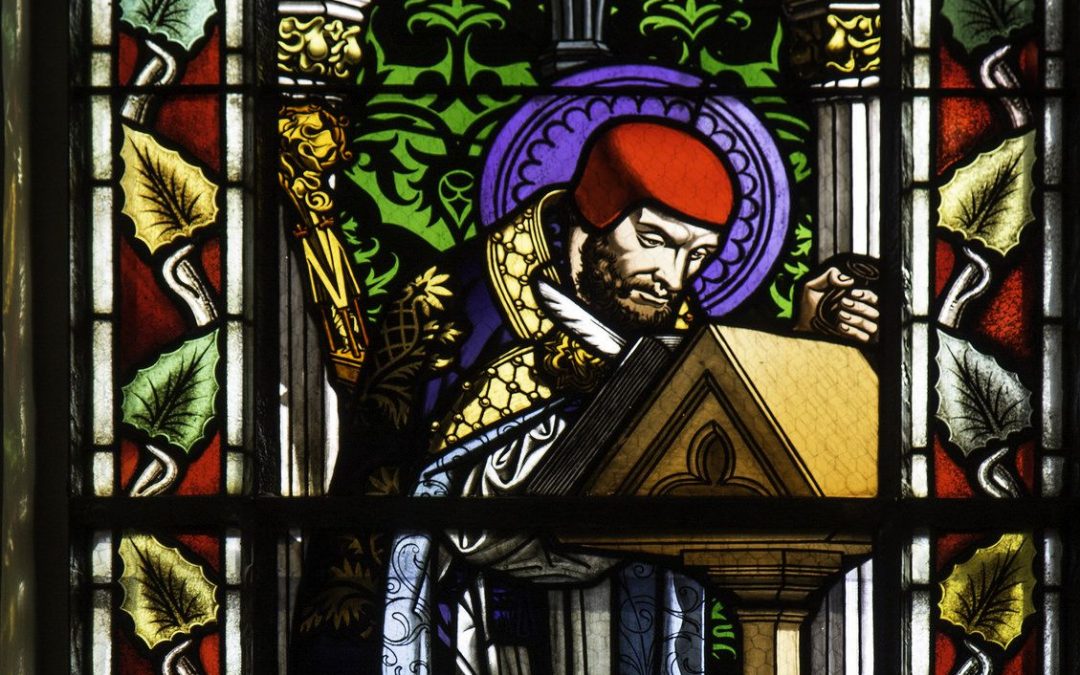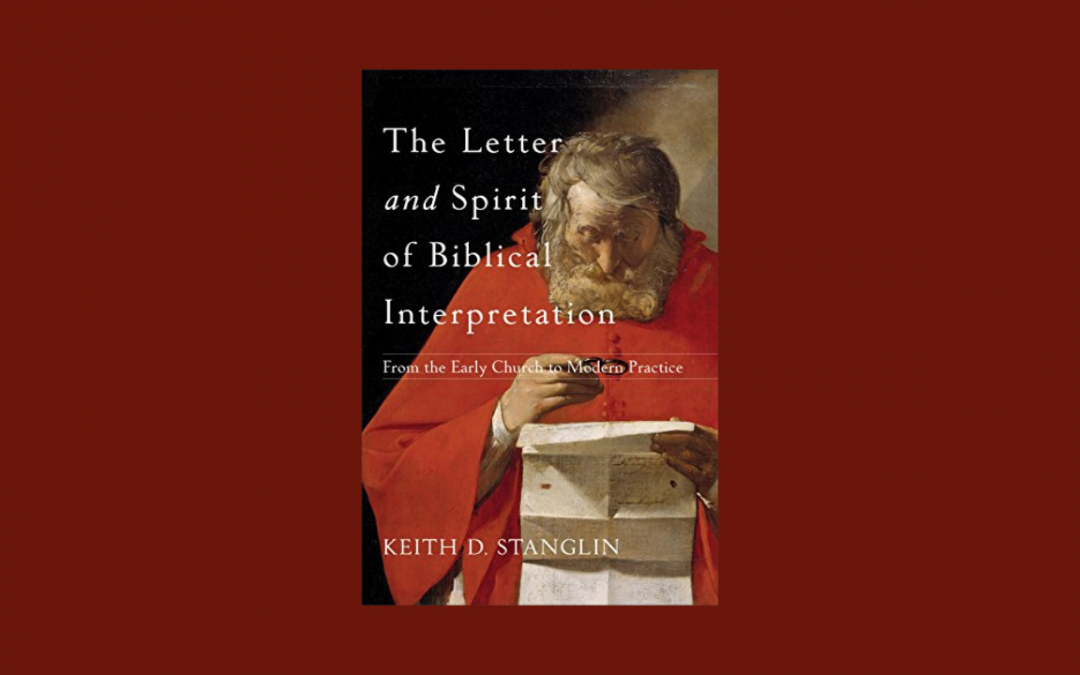
Abraham Booth on the Incarnation of the Son
The “extra calvinisticum” is a fancy name for a proper understanding of the incarnation of the Son. If kenotic Christology suggests a conversion of deity into humanity (in some sense or other), the extra calvinisticum pronounces the full integrity of both divine and human natures united in the one Person of the Son, “without conversion, composition, or confusion…” (2LCF 8.2) The extra calvinisticum enjoys a rich reception by Baptists, both general and particular.
We could name several of our forerunners who affirmed this doctrine, from Benjamin Keach to John Gill and others. Indeed, it would be safe to say that the Christology of the Baptist movement falls right in line with that of Augustine, Aquinas, the Reformers, and the post-Reformation Puritans. The extra calvinisticum is simply a designation for a biblically orthodox and creedal article of faith that has existed throughout the ages. Baptists find themselves within this wider Christological tradition.
One such Baptist was the 18th century English pastor-theologian, Abraham Booth (c. 1734-1806). But before we get to Booth, we need to understand why his theology is important in the present moment.
Contemporary Christological Issues
In Sunday School, many of us learned simply that “Jesus is God and He became a man for our salvation” (or something like that). It’s a wonderful truth to be sure. But we live in a theologically imprecise season, and statements like the above have been taken in different directions that regularly depart from the orthodox formulation of the doctrine of Christ. To be sure, that simple Sunday School saying is completely orthodox, and while we could qualify some of the terms, there is nothing wrong with the words as they sit. It’s true as far as it goes — Jesus is God and became a man for our salvation. Yet, because of theological imprecision and malnourished theological training and teaching — within seminaries and churches — the word “become” has taken on some other-than-desirable connotations.
It’s now almost commonplace to assume the Son of God left some of His God-ness behind when He “became” man. Kenotic Christology has apparently become a normal assumption among the laity of Christ’s church. Sometimes the incarnation is described in terms of Jesus “leaving behind” some of His divine attributes. Sometimes it’s described as a period wherein the Son ceases to operate according to certain “divine prerogatives.” On a more extreme end of the spectrum, the Son may even be said to transform from deity into humanity. All of this is kenotic language, to one extent or another. But kenotic Christology is not what Scripture teaches, nor is it what our Protestant, baptistic forerunners have believed.
This is why Abraham Booth becomes relevant for us today. He was a clear Baptist proponent of the orthodox doctrine of the extra calvinisticum.
Abraham Booth’s Christology
In the recent reprint of The Works of Abraham Booth (vol. 1), we find rich Christological discourse, predominantly in chapter eleven, titled, ‘Concerning the Person of Christ by Whom Grace Reigns.’ In that chapter, Booth unequivocally affirms the hypostatic union. He writes:
It was absolutely necessary also, that our Mediator and Surety should be God as well as man. For as he could neither have obeyed, nor suffered, if he had not possessed a created nature; so, had he been a mere man, however immaculate, he could not have redeemed one soul. Nay, though he had possessed the highest possible created excellencies, they would not have been sufficient; because he would still have been a dependent being. For as it is essential to Deity, to be underived and self-existent, so it is essential to a creature to be derived and dependent. The loftiest seraph that sings in glory is as really dependent on God, every moment of his existence, as the meanest worm that crawls. In this respect, an angel and an insect are on a level.[1]
What a wonderful statement!
The one Person of the Son is both very God and very man. In the Person of Christ, two natures are perfectly united without “conversion, composition, or confusion…” (2LCF 8.2) By affirming this orthodox article of the hypostatic union, Booth lays the foundation for avoiding just about every variety of kenotic Christology, especially those which remain on today’s smorgasbord of confusion. But he further strengthens his position when discussing the distinction among the Persons in the Godhead. He writes:
Agreeably to this distinction, we behold the rights of Deity asserted and vindicated, with infinite majesty and authority, in the Person of the Father; while we view every divine perfection displayed and honoured, in the most illustrious manner, by the amazing condescension of the Eternal Son—By the humiliation of him who, in his lowest state of subjection could claim equality with God.—Such being the dignity of our wonderful Sponsor, it was by his own voluntary condescension that he became incarnate, and took upon him the form of a servant.[2]
Here lies a strong affirmation of the extra calvinisticum, that Christ while “in his lowest state of subjection could claim equality with God…” Booth also seems to cut against the grain of contemporary subordinationist theories as well. For “every divine perfection” was “displayed and honoured” in the “condescension of the Eternal Son…” And, this “Eternal Son” was “no way obliged” to perform “obedience in our stead…” If the Father’s authority was in the Father alone (at least to a greater degree than is in the Son), the Son would have been obliged to obey. Booth, however, avoids this notion. He goes on to discuss reasons the hypostatic union was necessary:
That it was necessary our Surety should be God and man, in unity of person. This necessity arises from the nature of his work; which is that of a mediator between God, the offended sovereign, and man, the offending subject. If he has not been a partaker of the divine nature, he could not have been qualified to treat with God; if not of the human, he would not have been fitted to treat with man. Deity alone was too high to treat with man; humanity alone was too low to treat with God. The eternal Son therefore assumed our nature, that he might become a middle person; and so be rendered capable of laying his hands upon both, and of bringing them into a state of perfect friendship.[3]
For Christ to be qualified to “treat with God” He must Himself be God. For Christ to be qualified to stand before God on behalf of man, He must Himself be man. Booth grounds the necessity of complete divine and human natures united in the one Person of Christ based on what the work of redemption requires. We might say that if Christ is not all God, even in His state of humiliation, His humiliation wouldn’t mean anything. Likewise, if Christ is not all man, there is no sense in which He could be humiliated (since God never changes).
Conclusion
Abraham Booth, along with many other Baptists from yesteryear, provide us with rich historical precedence for classical doctrines such as the extra calvinisticum. A reading of Booth and other 17th and 18th century Baptists, e.g. Benjamin Keach and John Gill, would reveal that the majority report in today’s (even Reformed) Baptist circles concerning the doctrine of God and the incarnation of the Son is not the historical norm. But more constructively, Baptists such as Booth provide plenty of Scriptural and historical food for pastors attempting to lead their flocks to the cool, clear waters of Christian orthodoxy.
Tolle lege.
Resources:
[1] Abraham Booth, The Works of Abraham Booth, vol. 1, (Knightstown, IN: Particular Baptist Heritage Books, 2022), 334-35.
[2] Booth, Works, vol. 1, 336.
[3] Booth, Works, vol. 1, 337-38.





